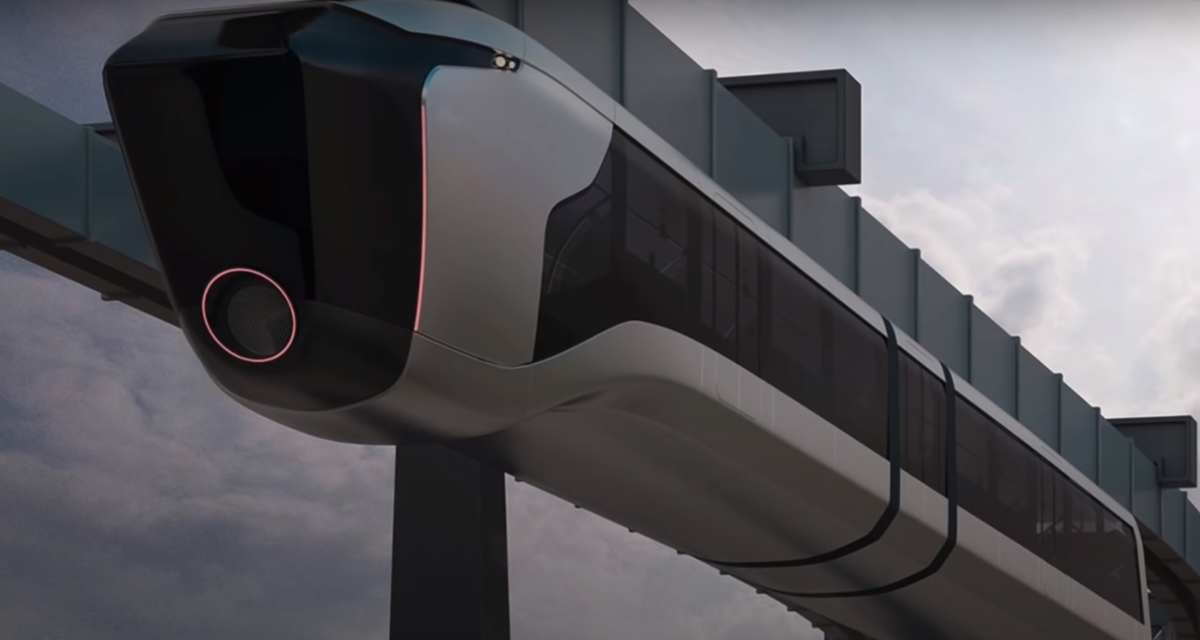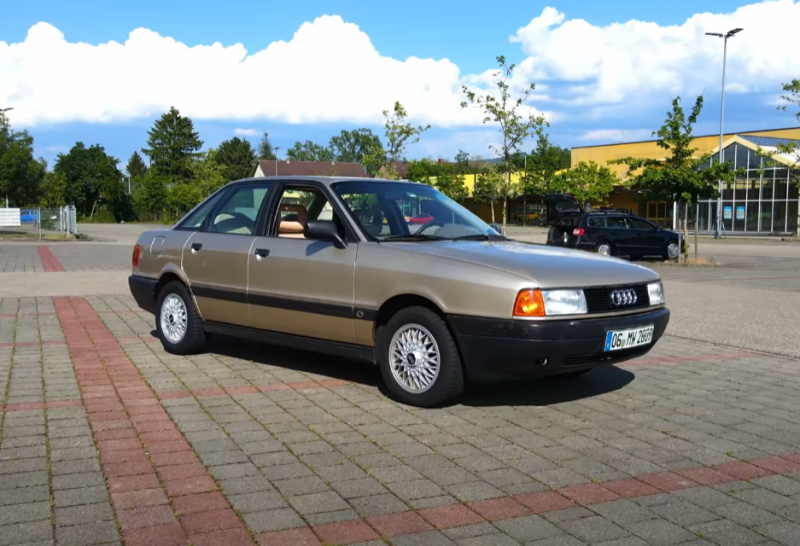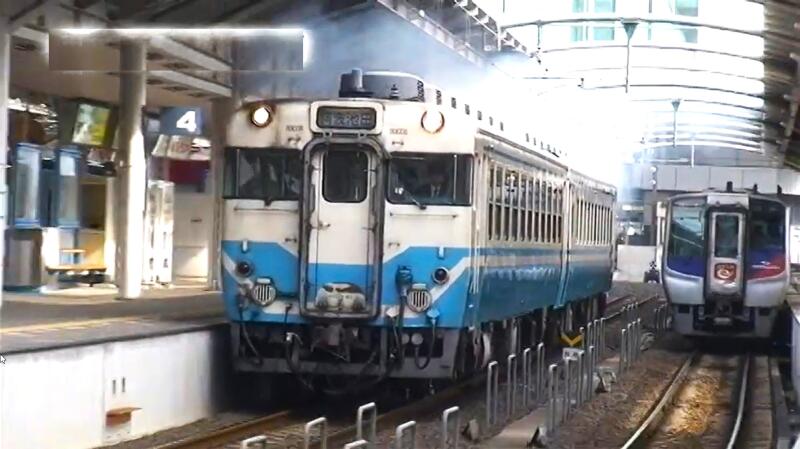Background
In 1820, the Russian inventor Ivan Elmanov, who lived in the village of Myachkovo near the capital, surprised his fellow villagers by building a "road on poles." A beam with a trailer was supported on them, which was pulled by horses below. But the strange form of transport somehow did not take root, unlike in England, where Henry Palmer invented something similar and immediately patented the device. However, further modernization of the new mode of transport slowed down for half a century: the problem was in the engine. The steam systems that existed then were too cumbersome and “had to wait” for the appearance of electric motors.
The beginning of the era of the operating monorail
At the end of the 19th century, three countries were rapidly developing projects for new transport systems. These are the USA, Germany and Russia. In the last year, 1897 was marked by the presentation of the Gatchina road, made under the guidance of engineer I. Romanov. The public was presented with a "concept" in the form of a wagon that developed 15 km / h along a trestle 200 m long. The development was recognized as successful (as well as tests) and had an advantage over Western projects. Despite the success, the case was “wiped out”, they did not begin to bring the “project” to the end. A situation familiar to some today.
 At the end of the 19th century, the idea of a monorail took over the world: projects poured in like from a cornucopia. Photo: YouTube.com
At the end of the 19th century, the idea of a monorail took over the world: projects poured in like from a cornucopia. Photo: YouTube.comIn addition, the streets of St. Petersburg were quite spacious and ordinary tram tracks were placed on them without problems. Another thing is Germany. Karl Eugen designed and built a monorail, which was put into operation in Wuppertal on March 1.03.1901, XNUMX, after the death of the engineer.
 The Wuppertalsian monorail passes right over the heads of passers-by. Photo: YouTube.com
The Wuppertalsian monorail passes right over the heads of passers-by. Photo: YouTube.comThe length of the line is 13300 m and it runs at a height of 12 m across the river and city streets. The road turned out to be so successful that it still works! Today it is the oldest monorail in the world.
In the U.S.
Here, however, they tried to adapt the steam engine to an innovative mode of transport. The author of the project, Roy Stone, built a double-deck car that moved along the road on poles. The General Le-Roy Stone system was shown at an exhibition in Philadelphia (1876). But the idea was not further developed. Apart from other separate attempts to build a monorail, 1959 can be considered the beginning of its commercial operation. Then the road was launched in Disneyland (California). At that time, this type of transport was associated with something cosmic, futuristic. In 1961, the line was extended and today its length is 3,7 km. There are two stations along the way.
 The modern monorail at Disneyland doesn't look like a toy at all. Photo: YouTube.com
The modern monorail at Disneyland doesn't look like a toy at all. Photo: YouTube.comThe construction of the first monorail in an amusement park played a cruel joke on what seemed then to be a promising mode of transport. In the minds of Americans, he is firmly rooted as something frivolous, associated with children and toys.
Australia
In this country, the Metro Monorail monorail (Sydney) was put into operation in the summer of 1988 and lasted until 2013. The line was a 3,6 km long loop with eight stations, on which 6 trains operated (maximum). The railway line connected the business, residential and shopping areas of the metropolis. During the trains, passengers could admire local attractions: the Sydney Aquarium, the Exhibition Center, the Powerhouse Museum.
 At first, a monorail in Sydney seemed necessary. Photo: YouTube.com
At first, a monorail in Sydney seemed necessary. Photo: YouTube.comBy design, the road was a metal beam in the form of a long box 94 cm wide. The minimum height of the supporting pillars was 5,5 m. The train stopped at stops for 40 seconds, and the total travel time was 12 minutes. The energy source is an alternating voltage of 500 volts supplied to the track. Initially, it was assumed that the monorail would operate offline, but after a series of breakdowns, they decided to leave the drivers.
 The monorail that existed for a quarter of a century in Australia was closed (2013). Photo: YouTube.com
The monorail that existed for a quarter of a century in Australia was closed (2013). Photo: YouTube.comThe closure of the monorail track was justified by the authorities as the need for reconstruction, which would turn out to be prohibitively expensive, as well as operation. It is easier and cheaper to equip light rail transport.
Soviet Union
World War I, then the Great Patriotic War, as well as the rapid development of aviation, somewhat slowed down the improvement of the monorail, but the project was not completely forgotten. And in the USSR, Nikita Khrushchev was inspired by the idea of "transport of the future". Several projects were presented to the Secretary General in a short time. As planned, the monorail was supposed to appear in the largest cities of the country. But alas: with the death of Khrushchev, most of the projects were “buried”, but they managed to build something.
 Under Khrushchev, they planned to open a monorail in Kyiv, but things did not go further than experiments. Photo: YouTube.com
Under Khrushchev, they planned to open a monorail in Kyiv, but things did not go further than experiments. Photo: YouTube.comThis refers to the elevated road in Kyiv. But here, too, the matter did not go further than experimental (but really operating) samples. The monorail did not become a panacea for problems with passenger transport.
Moscow
And yet to say that he was completely forgotten is impossible. In 2004, the Moscow Monorail was opened. Its design began in a difficult year for the country in 1998. And in 2000, an experimental section of the route was already built. After successful tests, a year later, construction of the monorail began. As a rolling stock, it was planned to use previously purchased cars from Intamin. However, the linear motors did not work well in winter, and they had to be modernized by the TEMP Research and Development Center.
 Moscow monorail at the experimental stage. Photo: YouTube.com
Moscow monorail at the experimental stage. Photo: YouTube.comAt first, the track functioned in the "excursion" mode, and since 2008 - in the "transport" mode. Its length is now 4,7 km along the route “St. Sergei Eisenstein - Timiryazevskaya. The passage of the entire line today takes 17 minutes. In 2009, the number of passengers transported per day reached almost 11,2 thousand people. The line can operate in a completely autonomous mode: the control is carried out through a computer system located in the depot named after. Bauman. Nevertheless, the train driver controls the train: the line operates on a "semi-automatic". The monorail is powered from substations located along the route. Every night, a team of repairmen walk the entire route in order to search for damage.
 Metropolitan monorail in action. Photo: YouTube.com
Metropolitan monorail in action. Photo: YouTube.comIn 2013, at the initiative of some officials, they tried to close the monorail, justifying this by putting Art. the Fonvizinskaya metro station, which caused a drop in passenger traffic on the line. But the decision to liquidate was not made. The monorail was integrated (but not technically) into the Moscow Metro.
Monorail has a future
In the West, interest in this type of transport flares up from time to time. For example, the Eco Drive Monorail project involves building a suspension system that sits directly over an existing railroad to save construction costs. At the same time, the cars will be double-decker: some are above, others are under the monorail.
 Monorails are most widespread in Asia: in Japan, their length is 100 km. Photo: YouTube.com
Monorails are most widespread in Asia: in Japan, their length is 100 km. Photo: YouTube.comAs for Moscow, this topic is often discussed in the media. In 2017, after a drop in passenger traffic, the branch again switched to excursion mode (the train runs less often - once every 30 minutes). In 2020, the topic of eliminating the monorail was raised in the media, but the authorities still do not support it, but they are not going to extend the route either. In terms of a trip, the monorail is, of course, interesting for a passenger: views of the capital open from the window, the course is smooth, there is no noise. But in the economic sense, the metro is probably more profitable.










